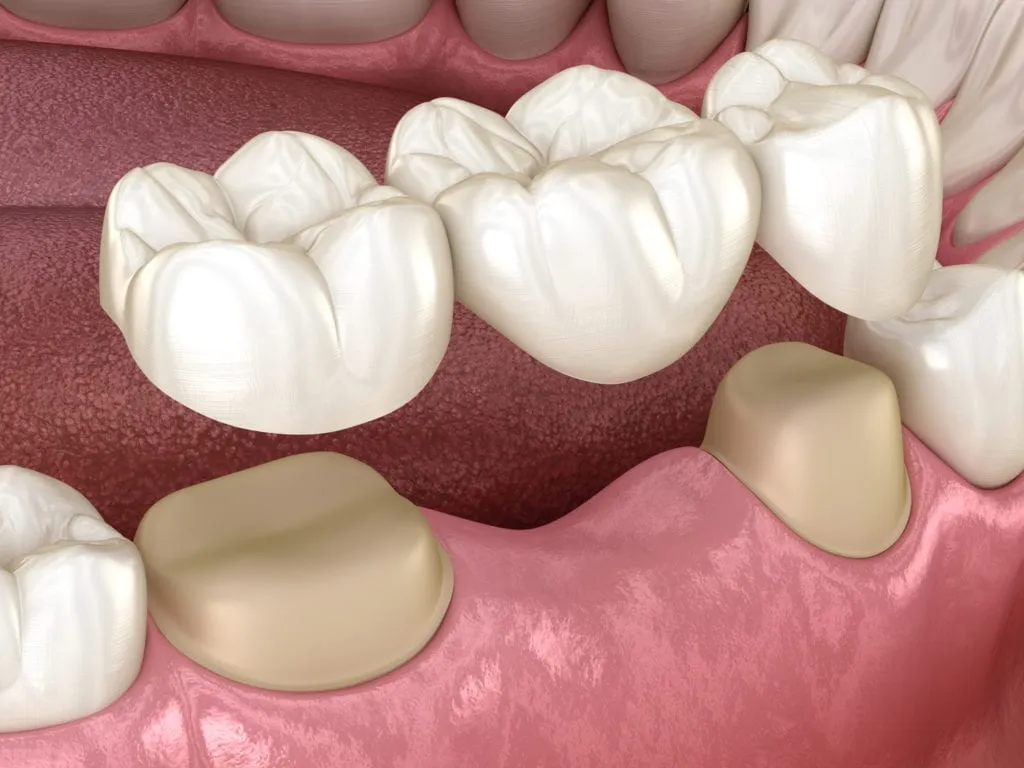Bridges are a great way to replace missing teeth, fix potential bite problems, and prevent teeth from shifting. They also correct the “sunken face” look associated with missing teeth and improve chewing ability. Bridges provide a more permanent solution than dentures.
The Solution:
A bridge is a single appliance that is generally attached to two teeth on each side of the space where a tooth is missing. An artificial tooth attached in the middle of the bridge fills in the gap where the missing tooth was. The teeth on either side of the gap are prepared for crowns (see crowns) and a highly accurate impression or mold is made of the prepared area. This mold is used to create a gold or porcelain (tooth colored) bridge in a dental laboratory. The bridge is then cemented onto the prepared surface of the teeth, effectively creating the appearance of a “new” tooth.
Advantages:
Unlike dentures, a fixed bridge is never removed. It is stable in the mouth and works very similar to natural teeth. By filling the gap and stopping the movement of other teeth, a fixed bridge is an excellent investment that provides better chewing ability and heads off possible jaw joint problems.
Disadvantages:
Fixed bridges are excellent restorations and have few disadvantages. They are highly durable, but they will eventually need to be re-cemented or replaced due to normal wear. The patient must have excellent oral hygiene to maximize the long term survival of the bridge. In the event that the use of a fixed bridge is not feasible, the best alternative is a dental implant.


